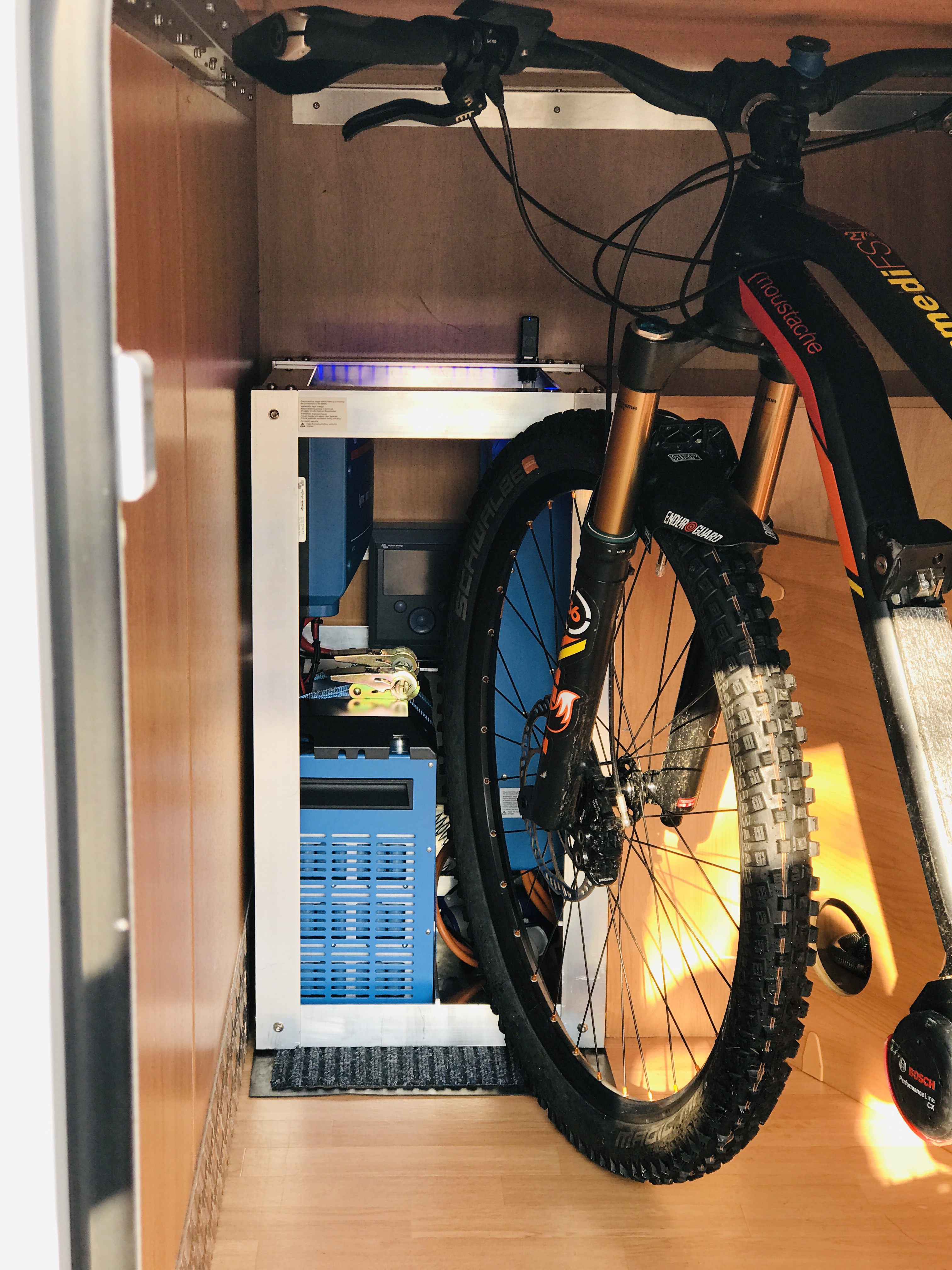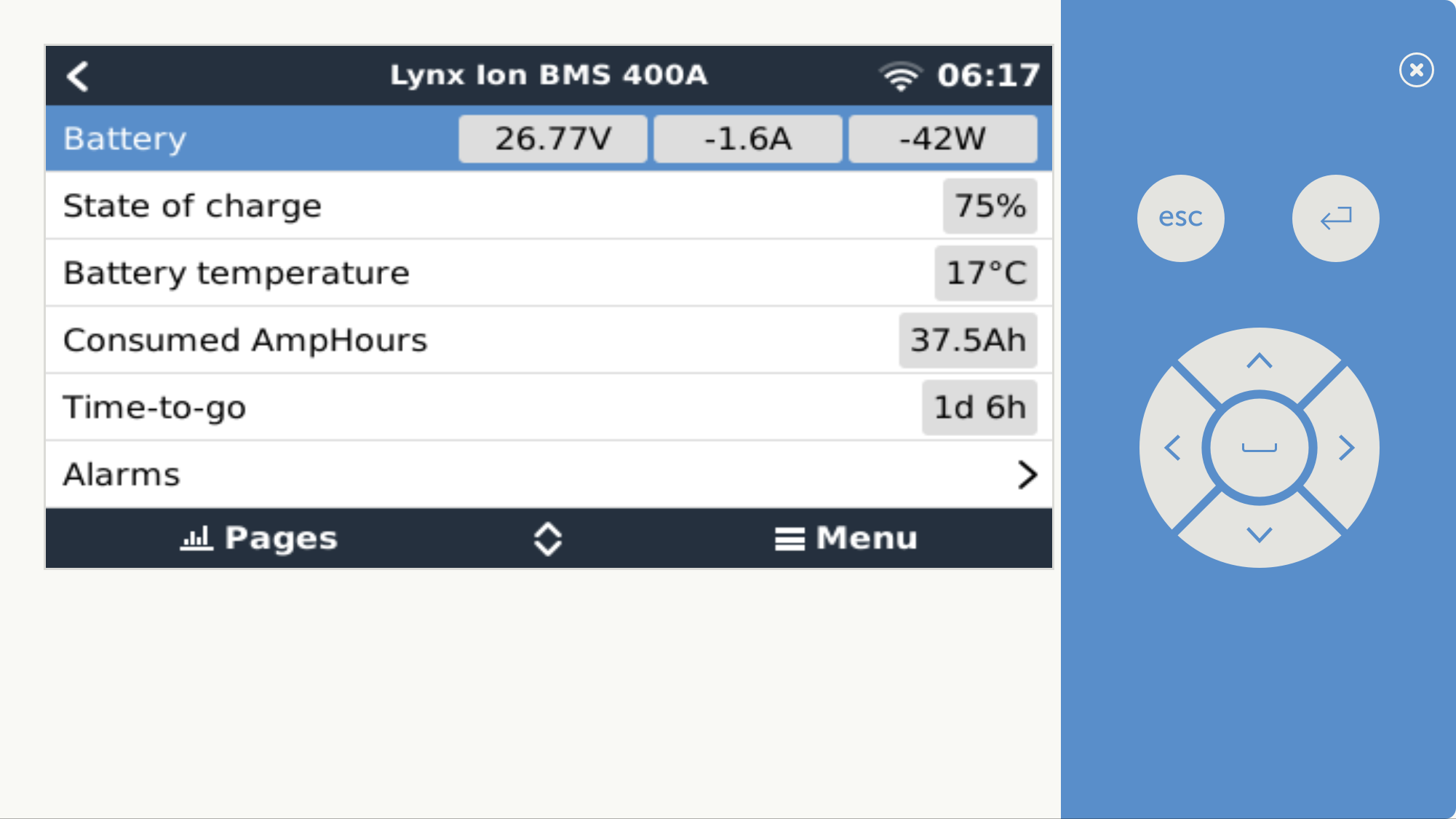My 'portable' powerpack consists of:
1 x Lithium HE battery 24V / 200Ah
1 x MultiPlus C 24/2000/50 (Latest firmware 433)
1 x Lynx Ion BMS 400A (v1.14)
1 x Color Control GX (v2.23)
Fitted in my motorhome garage per photo and used primarily for recharging electric bicycle batteries offgrid. Charging by shore power when available.

I am aware of the DVCC manual and Guy's 'accepted answer' https://community.victronenergy.com/answers/3212/view.html
Questions
1) Should I expect DVCC to sync to 100% when left on charge. I have fully charged a number of times but only one sync. Currently after a few hours the SOC shows 98%, V 27.92, 2.6Ah consumed and remains holding at that voltage with no change. Zero Amps in and Zero Amps out. The CCGX shows as still in 'absorption'. The voltage doesn't fallback to the 27,5V 'float' as in the Lynx Ion datasheet. Charge voltage in parameters on CCGX is fixed at 27.93, but datasheet shows 28.4V for 'absorption.'
2) Is there a problem with my system as going by SOC and Ah consumed I calculate the battery Ah to be 150Ah whereas of course it is 200Ah.

3) Unlike my boat system with Lithiums and Multi I am unable to set the Multi input current limit to Zero. I control this using the CCGX. It is impractical to use a remote panel so I really need this to ensure the system can go to Passthru, otherwise whilst camping on hookup the battery (per question 1) is simply going to remain held at that charge voltage all the time. Surely this is not good for the battery and indeed I would have expected the system to have dropped to 'float' voltage first and at that point that would prompt me to switch to Passthru, which I'm unable to do.
4) I understand DVCC takes control of charging/discharging but I have also set the Multi up as I would do on the boat and I think realised the Multi settings have little or no effect. I assume this is a good idea in case DVCC fails/goes wrong and if that were to happen would the Multi ensure the safety of the battery with the settings I have used, which are similar to those I've used on my boat as suggested by Johannes
Feedback
1) I really like DVCC as it was easy to setup with my system, and without all the refs to DVCC which I have read through here in the Community I would have been baffled as to the logic and settings it uses. Even so I still feel in the dark and concerned my system is not working correctly as detailed above.
